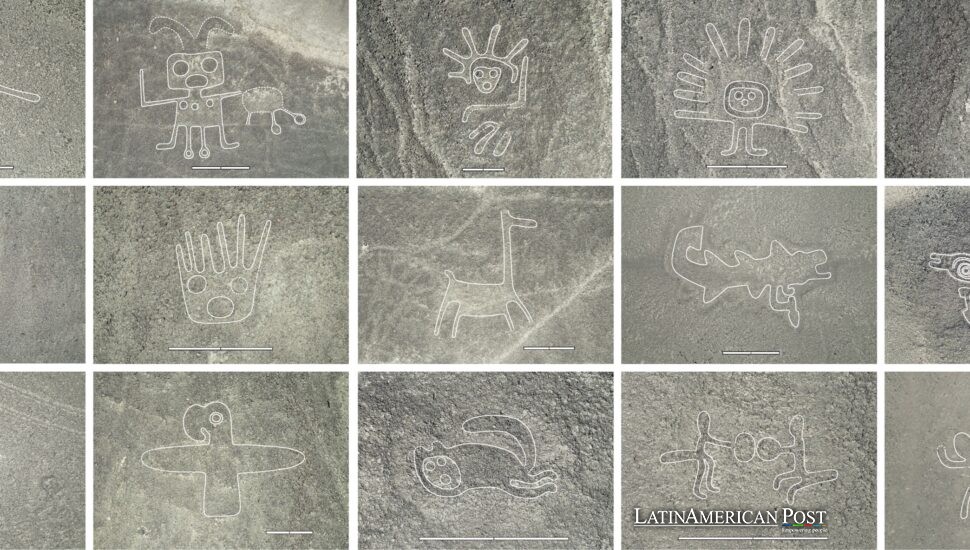How Cutting-Edge AI Unveiled New Peruvian Nazca Lines

A centuries-old enigma sprawled across Peru’s scorched southern flats is gaining fresh clarity through artificial intelligence. Now, modern mapping tools deliver new insights into the 2,000-year-old Nazca Lines, unveiling hundreds of unseen designs that recast archaeology’s view of ancient life.
The Evolving Search for Hidden Geoglyphs
For decades, scholars have trekked across the Nazca Pampa, a sunbaked plateau 1,640 feet above sea level. By scouring aerial photographs and satellite images, they identified 430 figurative “geoglyphs”—ancient outlines of animals, people, and shapes carved into the earth by scrapes removing the darker topsoil. The linear drawings seem spectacular and baffling, but they hold secrets. An AI-powered collaboration pushed investigators deeper into desert corners recently. This action led to the discovery of 303 surface-type images. In the Proceedings of the National Academy of Sciences journal, the publication of this remarkable find almost doubles the number of recognized geoglyphs.
Up until now, explorers have resorted to planes or satellites to glean faint ground details, but they have missed many partial or subtle patterns. The new approach sets the desert into a grid of tiny “tiles,” each analyzed for geoglyph potential. Furthermore, scientists from Yamagata University and IBM Research leveraged “transfer learning,” initially training AI on conventional photos before tailoring it for Nazca’s distinct environment. This cunning tactic resolved the challenge of a small original dataset, letting the model predict or highlight possible geoglyph shapes quickly. A human team then confirmed each on the ground, blending digital power with eyes-on expertise.
The newly spotted geoglyphs rest mostly along centuries-old trails. Many are modest in size—some no bigger than a bus—and depict people, livestock, or disembodied heads. “That points to a personal or small-group context,” said Dr. Masato Sakai, Yamagata University’s lead researcher. In contrast, older, large-scale “line-type” geoglyphs featuring wild animals likely served a more communal ritual purpose, placed near a web of ceremonial lines for broader gatherings.
Insights into Ritual and Everyday Life
Beyond the leap in sheer numbers, the uncovered geoglyphs add texture to the Nazca culture’s story. The presence of domesticated camelids or severed heads underscores daily life or spiritual practices that revolve around interactions with livestock and references to human sacrifices. With some geoglyphs perched a mere 40 feet from an ancient footpath, it’s plausible travelers paused to view or engage with these designs—perhaps reinforcing beliefs or marking local gatherings. Meanwhile, larger depictions in the nether regions stand about 34 feet from significant lines or trapezoidal networks, underscoring how they likely functioned as community-level shrines for organized ceremonies.
This idea that big geoglyphs served communal rites while smaller ones served personal devotions suits a broader cultural pattern. Earlier researchers proposed that the iconic hummingbird, spider, and monkey served as cosmic beacons for pilgrimages—some aligning with star cycles, others guiding travelers through the harsh Andean desert. Now, the new wealth of micro-scale figurative art paves the way for fine-grained analyses of social and symbolic nuances. The balance between intimate, everyday motifs and grandiose mythical beasts suggests the Nazca people wove multiple layers of meaning into their desert tapestry.
People had to rely on pictures because they lacked a written language. They might well have used them as mental maps, illustrating vital relationships between humans, animals, and deities. Combined with pottery shards and carbon-dated remains, the Nazca Pampa geoglyphs open a panoramic window into 15 centuries of society grappling with environmental extremes. The long-lost voices of the Nazca civilization reverberate through every line carved into the surface.
Protecting a Fragile Inheritance
But in this ephemeral mosaic, modern threats loom. Road expansions, unregulated tourism, and occasional vandalism put the geoglyphs at risk. The region’s intangible crust is easily disturbed; a single tire track can remain for years. The newly detected drawings only intensify calls for robust conservation. Thanks to the AI-based map, local authorities gain a clearer vision of where to fence, signpost, or monitor to stop further damage.
Each discovery is a valuable part of cultural memory. The UNESCO World Heritage listing for Nazca demands strict stewardship, but financial and bureaucratic obstacles hamper enforcement on the extensive plains. Wide recognition can escalate foot traffic. This can create tension between showing wonders and keeping fragile outlines preserved.
The AI success resonates outside Peru. Archaeologists find potential for a similar image-scanning method across the globe. They seek lost temples in Cambodian jungles or stone enclosures across African savannahs. The connection between advanced algorithms and local expertise makes archaeological breakthroughs bigger without bulldozing sites. As AI refines, it may accelerate the rewriting of human history in places once deemed exhaustively surveyed.
For Peru, bridging technology and cultural heritage fosters renewed pride. The Nazca Lines, etched largely between 100 BCE and 700 CE, remind the world that ancient people overcame harsh desert conditions to craft an enduring, cryptic masterpiece. While their exact meaning remains partly elusive—astronomical markers, communal rituals, or farmland boundaries—each new detail illuminates their complexity. In a time overshadowed by digitization, the archaic lines may endure centuries more so long as conservation outpaces modern erosion.
Also Read: Argentina Unveils Fossil Discovery Evoking Ancient Underwater Worlds
Now that these 303 newly detected geoglyphs enrich the ancient canvas, the impetus to protect them intensifies. From corridors linking small pilgrimages to monumental symbols of communal worship, the Nazca Lines unify cosmic ambitions with practical routines. In these austere deserts, creativity mingled with daily survival, forging patterns visible from the sky. If we heed the lessons from these fresh archaeological achievements, we may help secure the region’s heritage against 21st-century perils. Meanwhile, the newly minted synergy of AI and fieldwork hints that the final chapter of Nazca’s mysteries has yet to be written, beckoning archaeologists to keep looking—both in the desert’s dusty horizon and the data arrays of tomorrow.





